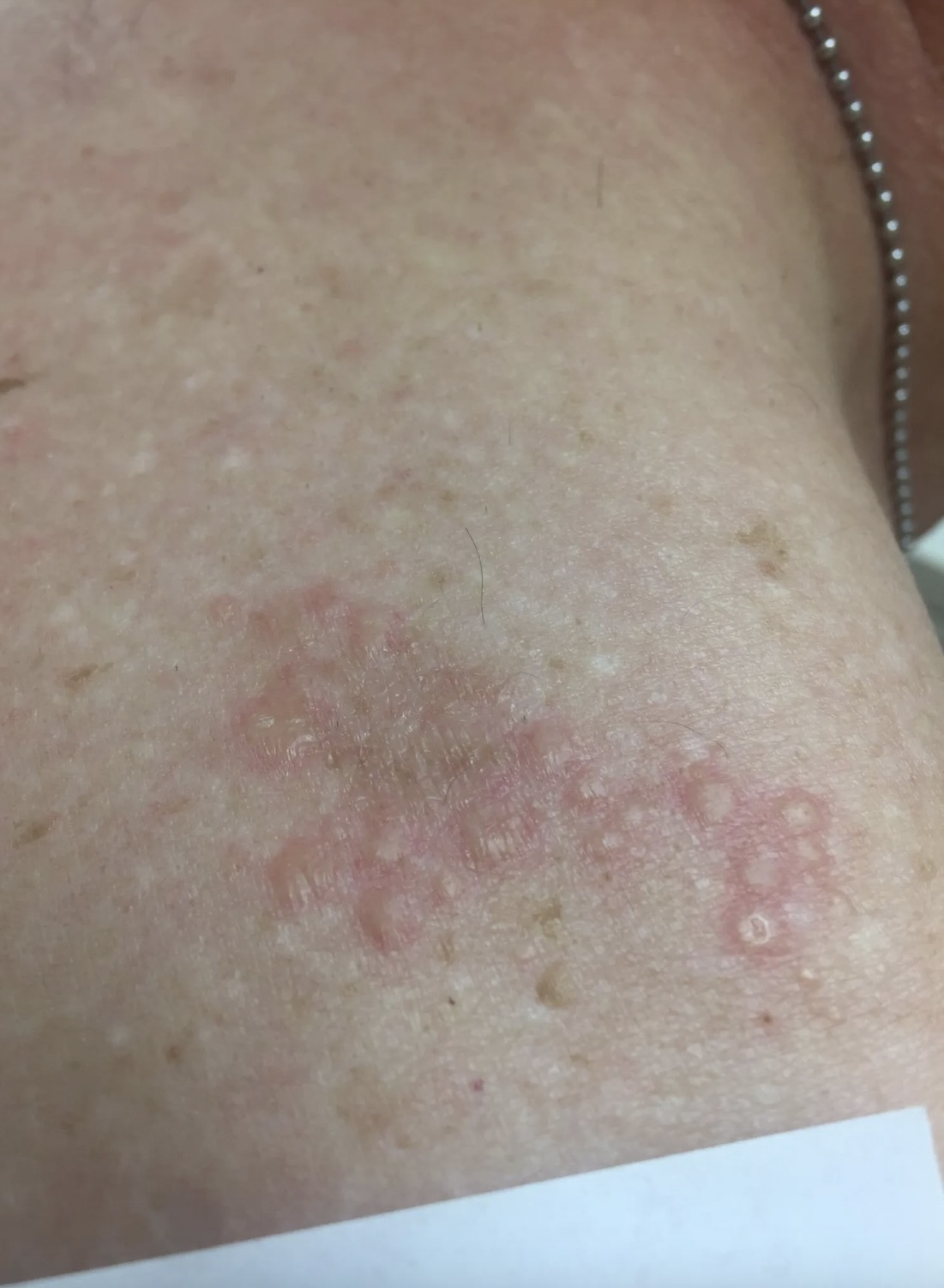Granuloma Annulare: Symptoms, Causes, Treatment
What are the symptoms of granuloma annulare?
Granuloma annulare is a chronic skin condition characterized by raised, reddish or skin-colored bumps that form a ring pattern, usually on the hands, feet, elbows, or knees. The symptoms of granuloma annulare can vary depending on the type and location of the lesions, but common symptoms include:
- Circular or ring-shaped rash: The most characteristic feature of granuloma annulare is the formation of one or more raised, ring-shaped patches on the skin. These patches may be pink, red, or skin-colored and often have a slightly raised border.
- Bumps or nodules: The rash may consist of small, firm bumps or nodules that may be tender or itchy. The bumps may be grouped together in a circular or semicircular pattern.
- Localized or widespread rash: The rash can occur in a single area or may spread to other parts of the body. In some cases, the rash may be widespread and cover large areas of the skin.
- Smooth or rough texture: The bumps or lesions may have a smooth or rough texture, and the skin over the lesions may appear shiny or pitted.
- Mild itching or discomfort: Some people with granuloma annulare may experience mild itching or discomfort in the affected area, but this is not always present.
- Rarely, systemic symptoms: In rare cases, granuloma annulare may be associated with systemic symptoms such as fatigue, fever, or joint pain, particularly in more severe or widespread cases.
Granuloma annulare is usually a benign and self-limiting condition, meaning it tends to improve on its own over time without treatment. However, in some cases, especially if the lesions are widespread or causing significant symptoms, treatment may be recommended to help relieve itching, reduce inflammation, and promote healing. Treatment options may include topical or oral corticosteroids, cryotherapy (freezing the lesions), or other medications to suppress the immune response. If you are suffering from granuloma annulare, you should consult your healthcare provider at your earliest convenience.
What are the causes of granuloma annulare?
The exact cause of granuloma annulare is not known, but it is believed to be related to an immune system reaction. Some possible causes and risk factors include:
- Immune system dysfunction: Granuloma annulare is thought to be caused by a faulty immune response, where the immune system mistakenly attacks healthy skin cells. This is supported by the presence of immune cells called T lymphocytes and macrophages in the affected skin.
- Genetic predisposition: There may be a genetic predisposition to developing granuloma annulare, as it has been reported to occur more frequently in certain families.
- Infections: Some cases of granuloma annulare may be triggered by infections, such as viral or bacterial infections, although this is not proven.
- Skin injuries or trauma: In some cases, granuloma annulare may develop at the site of a skin injury or trauma, such as a cut, scrape, or insect bite.
- Certain medications: Granuloma annulare has been reported to occur in association with certain medications, such as antihypertensive drugs and statins, although this is rare.
- Other underlying conditions: Granuloma annulare has been associated with other underlying conditions, such as diabetes mellitus, thyroid disease, and autoimmune diseases, although the exact relationship is not well understood.
Overall, the exact cause of granuloma annulare is still not fully understood, and more research is needed to determine the underlying mechanisms. It is likely that a combination of genetic, immune-related, and environmental factors contribute to the development of this condition.
What is the treatment for granuloma annulare?
Treatment for granuloma annulare is usually not required, as the condition often resolves on its own without treatment. However, treatment may be recommended for cosmetic reasons or if the lesions are causing discomfort. Treatment options for granuloma annulare may include:
- Topical corticosteroids: These medications are applied directly to the affected skin and can help reduce inflammation and itching. They are often used as a first-line treatment for mild cases of granuloma annulare.
- Intralesional corticosteroid injections: For more widespread or persistent lesions, corticosteroids may be injected directly into the affected skin to help reduce inflammation and promote healing.
- Cryotherapy: This involves freezing the lesions with liquid nitrogen to destroy the abnormal skin cells. Cryotherapy may be used for single lesions or small clusters of lesions.
- Phototherapy: Ultraviolet light therapy (phototherapy) may be used to treat more widespread or resistant cases of granuloma annulare. Phototherapy can help reduce inflammation and improve the appearance of the skin.
- Systemic corticosteroids: In severe cases of granuloma annulare, oral corticosteroids may be prescribed to help suppress the immune response and reduce inflammation. However, long-term use of systemic corticosteroids is generally not recommended due to the risk of side effects.
- Other medications: In some cases, other medications such as retinoids, calcineurin inhibitors, or hydroxychloroquine may be prescribed to help reduce inflammation and suppress the immune response.
It’s important to note that treatment for granuloma annulare is often not curative and may only provide temporary relief. The condition may recur or persist despite treatment. Therefore, regular follow-up with a healthcare provider is recommended to monitor the condition and adjust treatment as needed.




